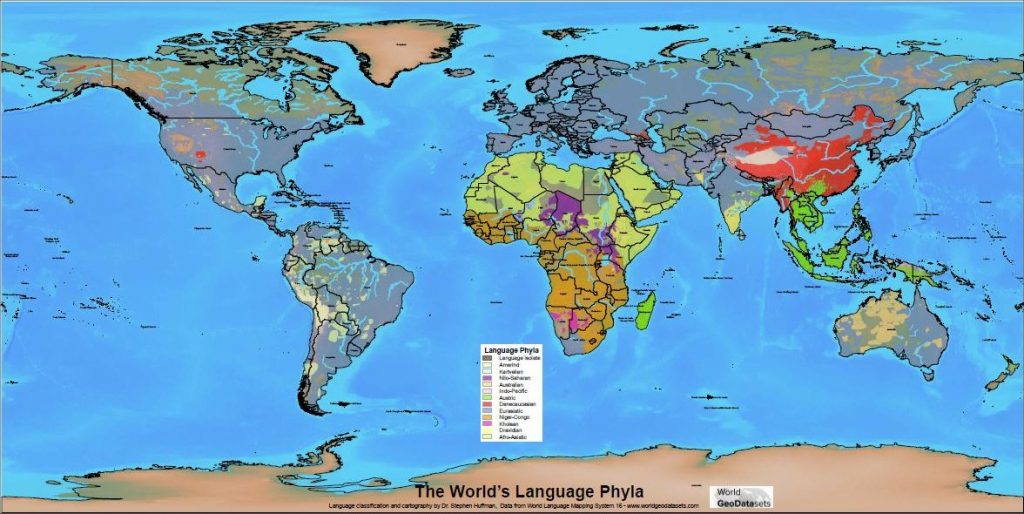It has often been said that air travel shrank the world, bringing people closer together. While true, that change was nothing like the transformation brought about by information and communications technologies (ICT). ICT has transformed every aspect of digital work and life, creating a globally connected society whose members have new social, economic and educational opportunities.
In this new environment, being multilingual, or knowing more than one language, increases our overall readiness to relate and to communicate cross-culturally. Since the ability to speak a language also gives us insight into a culture and a broader world view, language learning gives us more understanding than we get from simply having a translator present or learning a common diplomatic language.
Of course, not all people can learn many languages, and no one person could learn them all (there are currently over 7,000 known living languages in the world). Even if one never learns a foreign language and never travels, it remains true that cultural and language diversity brings a richness to our interactions, provides insight into the world around us and is in fact essential to leading a more cultivated life.
In celebration of International Mother Language Day, Feb. 21, which promotes linguistic diversity and multilingualism, Microsoft proudly supports such enablement technologies such as Chekov, Translator Hub and Universal Shaping Engine, which is included in Windows 10.
Literacy
Microsoft supports Matuto: Literacy for Life Partnership to enable learners across the globe to further their literacy skills in an appropriate language and culture. The Chekov tool is used to write and record a dynamic eBook which can be used by learners worldwide to develop their literacy skills anytime, anywhere and in any language. Visit the Microsoft in Education Blog to find out more.
Spoken Language
Microsoft Translator is releasing Yucatec Maya and Querétaro Otomi in an ongoing effort to further language preservation. The automatic translation systems for Mayan and Otomi were built using the Microsoft Translator Hub, a Translator product available free of cost to allow organizations to create their own unique translation systems. Visit the Microsoft Translator Team Blog to find out more.
Written Language
Microsoft is releasing the Universal Shaping Engine (USE), a groundbreaking script-rendering technology that allows Windows 10 to correctly display any script that has been encoded in Unicode. Visit Blogging Windows to find out more.
So how can we connect with even more people, across cultural and linguistic boundaries, learning local stories and building bridges between generations? The answer lies in technology. Today, search engines can translate voice and text so that all in the world can communicate. And real-time translation of conversations is another way forward to enable communication, as demonstrated in use here in classroom connections between the United States and Mexico.
Advancing language technology means embracing our multi-lingual, multi-geo and multi-cultural world. A world where we communicate across linguistic borders at the speed of the touch of the device in our hand. A world where our services and devices are interdependent and go where we go.
Technology can help preserve language, represent language, and can open social and economic doors. Using language-enabling technologies advances our capabilities to communicate with each other across a diverse set of languages. In a multilingual, multicultural world, communicating across borders and boundaries by way of technology offerings is the way forward for current and future generations of learners and of leaders.
Learn more information about Microsoft’s language initiatives.

